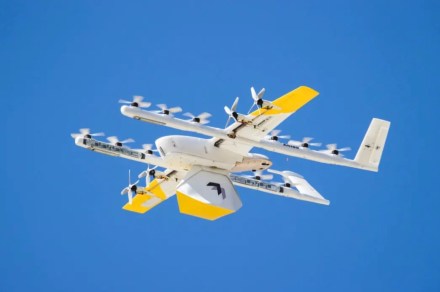The planet, you’ve likely heard, isn’t doing so well. The latest report from the United Nations’ chief climate body, the Intergovernmental Panel on Climate Change, shows global temperatures are very likely to rise 1.5 degrees Celsius above preindustrial levels in the next few decades. Human-generated greenhouse gas emissions are unequivocally the cause.
Increasing temperatures, scientists have shown, will see more extreme weather events occurring more often — more hurricanes, more flooding, more fire, more drought — and result in a host of knock-on effects that threaten ecosystems, livelihoods and life as we know it.
Unless nations take drastic action to wean themselves off fossil fuels in the coming decade.
That’s why November’s UN Climate Change Conference, COP26, is being hailed as “the world’s best last chance” to get the climate emergency under control. To ensure temperature change remains “well below” the 2 degrees Celsius agreed to by UN signatories in the Paris Agreement in 2015, countries need to act fast and double down on commitments to reach net zero emissions.
If much of that sounds like mumbo-jumbo to you, you’re not alone. The science and politics of climate change are often confusing, leading to a ton of questions. CNET will be on the ground in Glasgow to bring you everything from COP26 and beyond, and in preparation we’ve addressed some of the biggest points about the conference and things to look out for this November.
Unlock the biggest mysteries of our planet and beyond with the CNET Science newsletter, delivered Mondays.
What is COP26?
In a nutshell, it’s the biggest, most important climate conference on the planet.
Since 1995, the United Nations has held an annual summit bringing together representatives from almost all the nations on Earth. Politicians and policy makers come together to discuss climate targets and progress on reducing emissions. The meetings are formally known as a “conference of the parties” — that’s where you get “COP” from — and feature 190-plus United Nations members that have signed up to the United Nations Framework Convention on Climate Change in 1992.
The UNFCCC was the first critical milestone in the world’s reckoning with climate change and its first commitment to a collaborative, concerted approach toward mitigating it. In 1997, the Kyoto Protocol was adopted — the world’s first treaty with the aim of reducing greenhouse gas emissions. But the US didn’t sign on because the protocol didn’t include countries like China and India. Unfortunately, it failed to drive down greenhouse gas emissions.
The most critical climate change treaty today is the Paris Agreement, which will inform much of the conversation at COP26. We’ll get to that shortly.

Sand artwork adorns New Brighton Beach in the UK in May 2021.
Christopher Furlong/GettyWhen is COP26?
COP26 was originally scheduled to be held in November 2020 but another world-changing crisis, the COVID-19 pandemic, forced a reschedule.
It will now be held from Oct. 31 to Nov. 12, 2021, in the Scottish Event Campus of Glasgow, Scotland.
The UK partnered with Italy to win the “presidency” for this COP and the chance to host it. While COP26 will take place purely in Glasgow, a “Pre-COP” is scheduled to be held in Milan, Italy, from Sep. 30 to Oct. 2.
The Pre-COP is the final stop before all nations come together in November and features representatives of a few dozen countries, usually climate, environment or energy ministers. At the meeting, the delegates engage in discussions to help refine and set the agenda for COP26.
If you have more questions about what to expect from COP26, you can email our Science team.
What is the Paris Agreement?
The Paris Agreement will be fundamental to discussions at COP26. To understand it, we need to travel back to COP21 in December 2015.
The 21st COP, which took place in the French capital, saw 196 nations sign the Paris Climate Accords, or “Paris Agreement,” a legally binding treaty with the aim of limiting global warming to “well below 2 degrees Celsius” by 2100, compared to preindustrial levels (levels commonly defined as the global average temperature between 1850 and 1900.)
“The Paris Agreement was incredible,” says Sarah Perkins-Kirkpatrick, a climate scientist at UNSW Canberra in Australia. “All of a sudden we had this overwhelming majority of countries saying, ‘Yeah, we need to limit global warming to 1.5 or 2 degrees Celsius.”http://www.cnet.com/”
To achieve that goal, the agreement sets countries on a course to reach a peak in their greenhouse gas emissions as soon as possible and to shoot for “net zero” emissions in the second half of this century. Countries that are party to Paris agreed to emissions reduction targets known as their “nationally determined contribution,” or NDC.
These targets are not set by the UNFCCC or IPCC but by the countries themselves, and so they are “negotiated,” as such, at the COP. However, the conference provides the limelight and the international pressure that could see nations announce more ambitious targets. The Paris Agreement also sets out an update cycle with which to improve NDCs.
“Every five years, countries are asked to update these NDCs and not only to update them, but to make them more and more ambitious,” says Malte Meinshausen, an environmental scientist at the University of Melbourne, Australia.
Last year was the end of the first five-year cycle, and countries were expected to update their NDCs in preparation for COP26. The idea is that countries will submit updated NDCs for 2025 and 2030, making this a critical COP for the next decade.
With just over a month to spare before COP26, Climate Action Tracker shows 89 countries have updated their NDCs and 71 have not. Of the 89, nine, including Australia, Russia and New Zealand, have submitted NDCs that are not more ambitious.
The Paris Agreement laid the foundations for taking action on climate change. But in the past five years, as more science and research has been poured into understanding climate change and the effects of a warming world — including the threats to biodiversity, the extinction of coral reefs, the increased risks of catastrophic weather events and a dangerous rise in sea levels — the NDCs and targets that the majority of nations originally set for 2030 have been shown to be woefully insufficient if we’re to keep warming “well below 2 degrees Celsius.”
Naturally, that leads us to asking…
Why 1.5 and 2 degrees?
The Paris Agreement enshrined these two numbers in the public consciousness, but you can trace their origins back several decades. The idea of limiting warming to 1.5 degrees Celsius was floated at COP16, which took place in Cancún, Mexico, in 2010.
It wasn’t just a number picked out of thin air.
“One-and-a-half degrees was chosen for, first, scientific reasons and second, practical reasons,” said pioneering climate scientist Michael Oppenheimer during a recent briefing by Covering Climate Now.
But since Paris, the numbers have taken on a new level of urgency because the science of climate change has only strengthened in the past six years. “A lot of science has come out since the Paris Agreement,” notes Perkins-Kirkpatrick.
Much of the science was synthesized in the IPCC’s Special Report on Global Warming of 1.5 degrees Celsius, or SR15, which was released in 2018. This report goes into the minutiae of how 1.5 degrees and 2 degrees Celsius of warming would affect the planet — and states that warming is likely to reach 1.5 degrees Celsius “between 2030 and 2052 if it continues to increase at the current rate.”
A timeline of the major milestones
IPCC/SR15Further study has shown the situation to be even more serious. In the latest report prepared by the IPCC, scientists showed that Earth has already warmed by about 1.1 degrees Celsius compared to preindustrial times. The report argued that, even in the most optimistic scenario, we are almost certain to reach 1.5 degrees Celsius before 2100. However, with immediate, extensive action to mitigate carbon emissions we could drag the global average temperatures below 1.5 by the end of the century.
But what if we don’t? What if global warming does reach 2 degrees Celsius? It’s only half a degree warmer right? Those small changes can make huge differences. In the recent IPCC report, the authors state that every half a degree increase will very likely result in increased heat waves, rainfall and droughts.
Avoiding the worst impacts of the climate crisis requires all nations party to the Paris Agreement to reduce carbon emissions rapidly — within the next decade. It’s still possible to hit 1.5 and dip back below, but it requires a halving of global emissions by 2030 — and net-zero emissions by 2050.
With all that in mind, we come to…
Why COP26 is so important
The timing of this COP is important for two reasons.
First, it’s the earliest opportunity for signatories to the Paris Agreement to get together and discuss updated NDCs. Meinshausen highlights the task ahead for COP26: It will need to “put the world on a downward trajectory path” when it comes to emissions and NDCs are fundamental to this process.
The biggest emitters of carbon are China, the US, India, Russia and Japan. The European Union countries altogether rank as the third biggest.
Some of these nations are attempting to lead the way. After rejoining the Paris Agreement this year, the US government has submitted one of the most ambitious reduction targets overall, though it’s still short of what’s required to limit warming to 1.5 degrees Celsius. The UK did similarly, submitting a 2030 goal of emissions reductions that is in line with reaching net zero by 2050.
Meinshausen notes that close attention will be paid to both China and India’s NDCs. While China has recently been applauded for refusing to fund new coal projects overseas, it has kept its climate targets close to its chest. India is yet to commit to new NDCs, but there is some discussion that the nation will reveal its pledge at COP26 — both nations will be worth watching at the conference.
It might seem kind of unusual at first, but there is no legal enforcement of NDCs and it’s not the fear of punishment that holds countries to account. Accountability is really brought on by diplomatic pressure and the constant, transparent reporting countries must provide under the Paris Agreement.

UK Prime Minister Boris Johnson (left) with Sir David Attenborough (right), in February, at the launch of COP26. The UK shares the presidency of COP26 with Italy.
Chris J Ratcliffe/GettyThe second reason is climate injustice.
“Not everybody contributed to emissions of greenhouse gases equally,” said Saleemul Huq, director of the International Center for Climate Change and Development. Rich nations were able to burn fossil fuels during the industrial revolution and beyond, pumping extreme amounts of carbon (and other greenhouse gases) into the atmosphere. Poor countries didn’t contribute the same level of emissions — yet they are the major victims of the climate crisis.
The Paris Agreement also set out terms for climate aid (reaffirming an earlier pledge) that required developed nations to help developing ones tackle the climate crisis with financial support. By 2020, the goal was to provide $100 billion a year in funding to help mitigate greenhouse gas emissions or create adaptation strategies. But developed nations in the agreement fell short — by a long way. COP26 is set to be a big moment for upholding and strengthening these pledges.
While COP26 being hailed as the best last chance to avert catastrophe, it’s not the be all, end all. The pandemic may have sidelined COP26 for a year, but pressure has continued to build since the last COP and there’s a growing public outcry for decisive action. Across the US, drought, floods, wildfires and hurricanes have wreaked havoc and the impacts of the climate emergency are now being felt more readily than ever before.
Can COP26 deliver the next positive step in staying well below 2 degrees? Climate scientists I spoke with are optimistic. We might still overshoot 1.5, but not by much, Meinshausen hopes. If such a future is to come to pass, those hopes rest on COP26’s shoulders.
If you have more questions about what to expect, you can email our Science team.
Note: This article have been indexed to our site. We do not claim legitimacy, ownership or copyright of any of the content above. To see the article at original source Click Here













